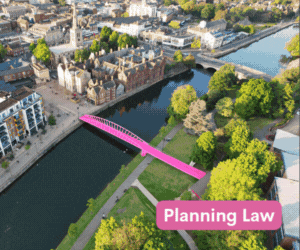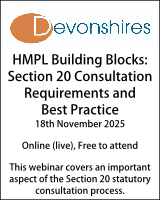High Court quashes inspector approval for Green Belt villa over previously developed land assessment
- Details
A planning inspector's decision to grant planning permission for a neo-classical villa in the Green Belt has been quashed following a statutory review brought by Ribble Valley Borough Council.
In R (on the application of Ribble Valley Borough Council) v (1) Secretary of State for Housing, Communities and Local Government (2) Majid Hussain [2025] EWHC 2363 (Admin), Karen Ridge, sitting as Deputy High Court Judge, found that the inspector's conclusion that the site was previously developed land (PDL) was unlawful.
The proposed planning application would have seen the construction of a private dwelling in the village of Mellor, which sits in the Green Belt to the South East of Greater Manchester.
Ribble Valley refused the application in September 2023, citing - among other things - harm to the Green Belt character, harm to the setting of an adjacent Grade II listed historic park, and harm to the visual amenity of the area.
On appeal, planning inspector Simon Dean found that the site was PDL as part of it was being used for equestrian purposes.
He said: "It is clear to me, given the equestrian use of the site and the distribution of equestrian development across it, that the site is previously developed land, and the proposal would be redevelopment of it.
"As such, the proposal may not be inappropriate development in the Green Belt if the proposal does not have a greater impact on the openness of the Green Belt than the existing development."
The inspector specifically referenced Paragraph 154g of the National Planning Policy Framework, which sets out when the construction of new buildings may be regarded as not inappropriate in the Green Belt.
Paragraph 154g allows for the limited infilling or the partial or complete redevelopment of previously developed land, whether redundant or in continuing use, which would not have a greater impact on the openness of the Green Belt than the existing development.
Ribble Valley appealed the approval to the High Court in September 2024, bringing a single ground with four sub-grounds:
- The inspector failed to apply the correct approach under Broxbourne and therefore unlawfully concluded that the entire site was PDL.
- The inspector failed to provide adequate reasons.
- The inspector took into account an irrelevant consideration.
- The inspector's conclusion that the entire site was PDL was irrational in any event.
The decision centred around the application of R (on the application of Lee Valley Regional Park Authority) v Broxbourne BC [2015] EWHC 185 (Admin).
In Broxbourne, Ouseley J stated that while "the flexibility in the NPPF for previously developed land may not require every part of the application site to have been previously developed land, the presence of some previously developed land within an application site does not make the whole site previously developed land either, applying the definition in the NPPF".
"The NPPF itself draws a limit on whether a site is previously developed land by reference to the curtilage of the buildings," Ouseley J added.
At the High Court, Shemuel Sheikh of Kings Chambers, who acted for the council, argued that the inspector should have considered the extent to which parts of the site comprise PDL and, as a result, whether the site as a whole was PDL, or alternatively whether only parts of the site were PDL.
He contended that this error was apparent when one considered how the inspector described the visual effects of the site, referring to the "piecemeal spread of development across the site" in his decision letter.
James Strachan KC, meanwhile, contended on behalf of the second defendant, Majid Hussain, that the glossary definition of PDL is open-textured and requires the decision-maker to exercise a planning judgment and to make findings.
He claimed that the definition of PDL is not confined to building footprints and their curtilages, but it also includes land covered by any permanent structure and associated fixed surface infrastructure.
The judge ultimately found that: "The Inspector appears to have undertaken an assessment of the site and concluded that the whole site was PDL. His bare conclusion that the site was PDL gives no indication that he has taken into account the different elements and parcels of the site and their differing characteristics as against the glossary definition.
"The Inspector has however acknowledged the piecemeal spread of development, and the differing characteristics of different parts of the site. Given that description and the particular characteristics of this site, it is clear that he ought to have properly gone on to explain how he came to a final conclusion that the whole site was PDL. A more detailed analysis as to the constituent parts of PDL was needed to support a lawful conclusion that the whole site was PDL.
"Given the characteristics of this particular site, it was necessary to have explained how the constituent elements of the site contributed to such a conclusion. The Inspector has not undertaken the Broxbourne exercise which this site requires due to the piecemeal spread of development and the concentration of equestrian development at one end of the site. These factors called for some analysis as to the relative proportions of PDL.
"His analysis of the PDL question was therefore flawed."
The judge later quashed the decision.
Commenting on the decision, Nicola Hopkins, Ribble Valley's director of economic development and planning, said: "The limited amount of Green Belt land within the Ribble Valley successfully restricts urban sprawl and protects the valley's highly valuable landscape.
"This ruling confirms the correct application of Green Belt policy and reinforces the fact that inappropriate development will not be supported in the Green Belt. The council will continue to protect the borough from harmful development"
Adam Carey
Contracts & Procurement Lawyer
Trust Solicitor (Employment & Contract Law)
Senior Lawyer - Contracts & Commercial
Locums
Poll








































